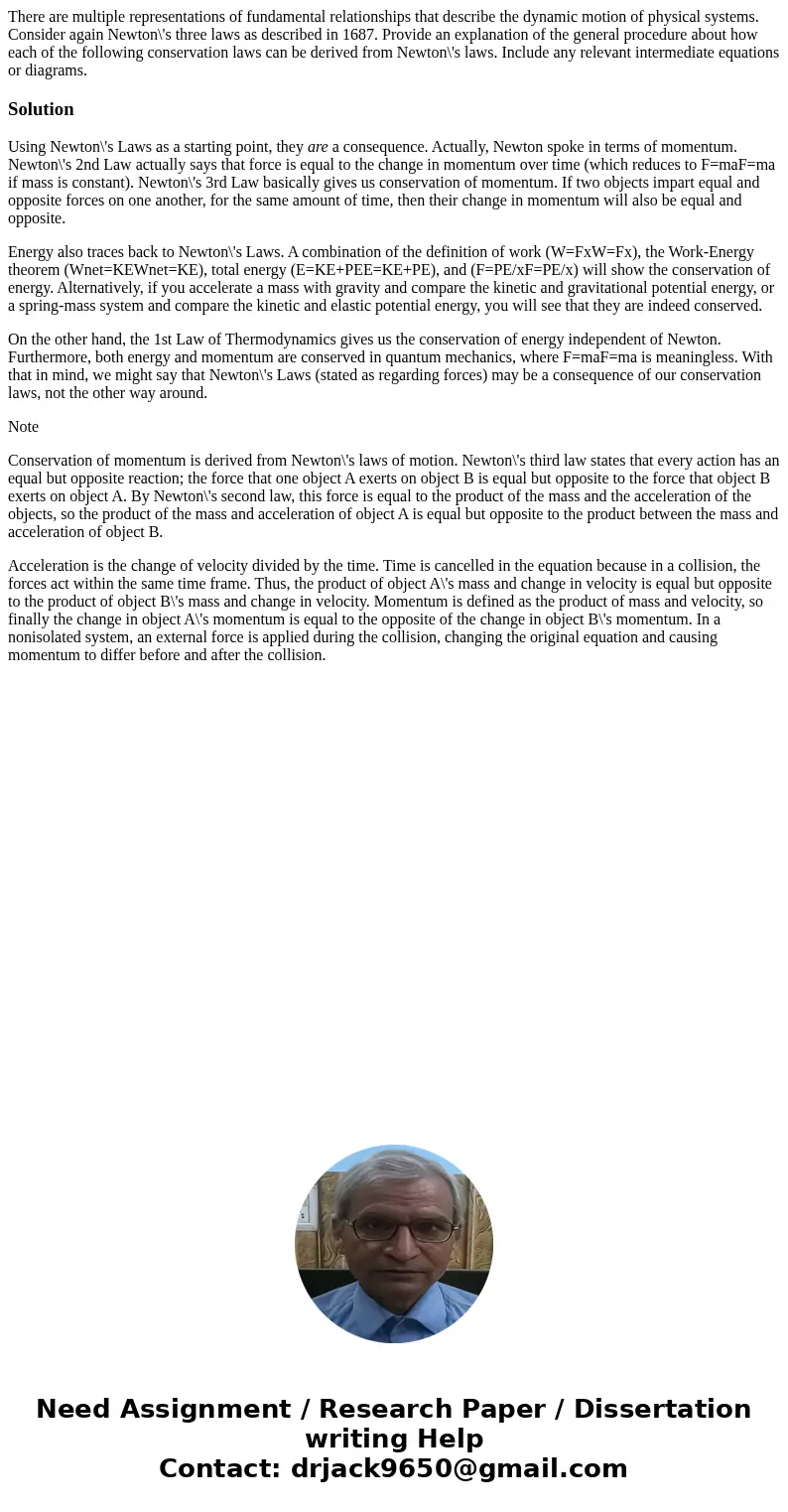There are multiple representations of fundamental relationsh
Solution
Using Newton\'s Laws as a starting point, they are a consequence. Actually, Newton spoke in terms of momentum. Newton\'s 2nd Law actually says that force is equal to the change in momentum over time (which reduces to F=maF=ma if mass is constant). Newton\'s 3rd Law basically gives us conservation of momentum. If two objects impart equal and opposite forces on one another, for the same amount of time, then their change in momentum will also be equal and opposite.
Energy also traces back to Newton\'s Laws. A combination of the definition of work (W=FxW=Fx), the Work-Energy theorem (Wnet=KEWnet=KE), total energy (E=KE+PEE=KE+PE), and (F=PE/xF=PE/x) will show the conservation of energy. Alternatively, if you accelerate a mass with gravity and compare the kinetic and gravitational potential energy, or a spring-mass system and compare the kinetic and elastic potential energy, you will see that they are indeed conserved.
On the other hand, the 1st Law of Thermodynamics gives us the conservation of energy independent of Newton. Furthermore, both energy and momentum are conserved in quantum mechanics, where F=maF=ma is meaningless. With that in mind, we might say that Newton\'s Laws (stated as regarding forces) may be a consequence of our conservation laws, not the other way around.
Note
Conservation of momentum is derived from Newton\'s laws of motion. Newton\'s third law states that every action has an equal but opposite reaction; the force that one object A exerts on object B is equal but opposite to the force that object B exerts on object A. By Newton\'s second law, this force is equal to the product of the mass and the acceleration of the objects, so the product of the mass and acceleration of object A is equal but opposite to the product between the mass and acceleration of object B.
Acceleration is the change of velocity divided by the time. Time is cancelled in the equation because in a collision, the forces act within the same time frame. Thus, the product of object A\'s mass and change in velocity is equal but opposite to the product of object B\'s mass and change in velocity. Momentum is defined as the product of mass and velocity, so finally the change in object A\'s momentum is equal to the opposite of the change in object B\'s momentum. In a nonisolated system, an external force is applied during the collision, changing the original equation and causing momentum to differ before and after the collision.

 Homework Sourse
Homework Sourse